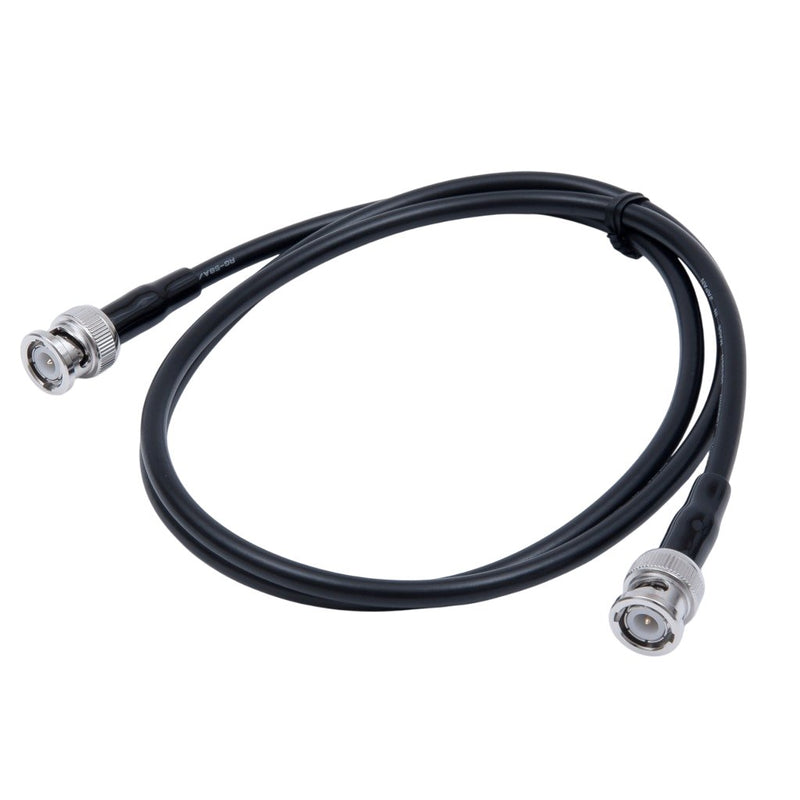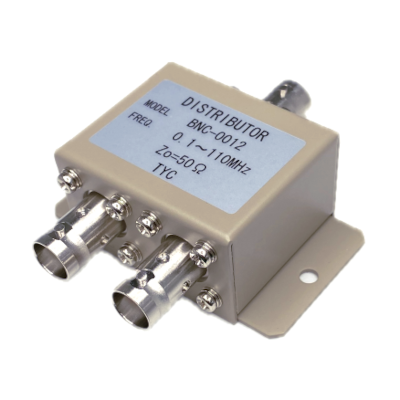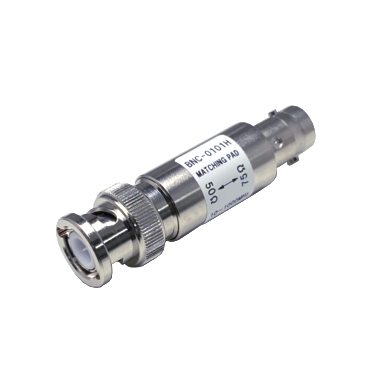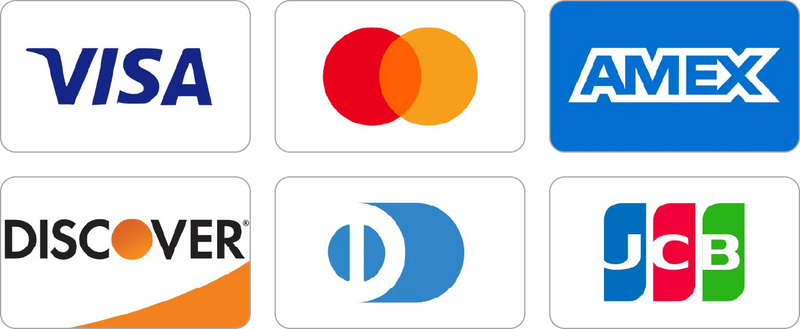BNC 50 Ω RF Connectors Guide: Types, Structure, and Uses Explained
What are BNC 50 Ω RF Connectors?
BNC (Bayonet Neill–Concelman) 50 Ω RF connectors are commonly used in video, communication, and measurement equipment due to their good frequency range (DC to 2 GHz), compact size, and light weight. They have a 50 Ω impedance and use a bayonet locking system for easy connection.
BNC RF connectors come in 50 Ω and 75 Ω versions. The 50 Ω connector is typically used for power transmission in radio equipment, while the 75 Ω connector is mainly used for video and audio signal transmission in TV receivers.
BNC 50 Ω RF Connectors by Type
In-Stock Coaxial Cables with BNC 50 Ω RF Connectors

BNC Plug-to-BNC Plug RG-58A/U Cable Assemblies
Micro-Coaxial Cables
Semi-Flexible
Semi-rigid
Trivia: Compatible Cable Types
- MIL Standard Cables: Also called Mil-Spec, these cables meet strict US military standards for performance and durability. Often starting with "RG" (Radio Guide), they are essential in high-demand areas like defense, aerospace, and telecommunications.
- Micro Coaxial Cables: These ultra-thin cables are designed to connect to miniature RF connectors like U.FL. They ensure signal integrity in space-constrained electronic devices such as smartphones, laptops, and medical equipment.
- Semi-Flexible Coaxial Cables: With moderate flexibility, these cables can bend and hold their shape while offering strong shielding and low signal loss, making them ideal for precise routing in telecommunications, test equipment, and internal electronics.
- Semi-Rigid Coaxial Cables: Made from a seamless metal tube, these cables provide superior shielding and minimal signal loss. Their rigid design ensures stable performance in critical applications like military systems, high-frequency instruments, aerospace, and microwave assemblies.
BNC 50 Ω RF Connector Features
Coupling Method
The Bayonet lock method is an easy way to connect and disconnect without threading. Simply align the plug with the jack’s guide, rotate the ring slightly to lock it in place, and the internal spring will hold it securely. To remove it, just turn it in the opposite direction. Because it’s held by a screw, the connector cannot be pulled out by just tugging on the cable.
Trivia: The Origin of BNC
The name BNC is often thought to come from "Bayonet" and "Neill Concelman," the connector manufacturer. However, there are various theories, including interpretations like BayoNet Connector, Baby-series N Connector, and British National Connector.
Many Uses
Thanks to its low cost, good frequency response, and small size, the BNC connector is widely used across various fields, including measurement, communication, video signals, office equipment, mobile devices, and factory automation. It is also used as an upgraded version of RCA terminals for simple signal transmission.
Impedance
BNC connectors come in 50 Ω and 75 Ω types. The 50 Ω version is used for transmitting power in radio equipment, while the 75 Ω version is used for video and audio signals. If a 75 Ω cable is connected to a 50 Ω connector, it works for frequencies up to 200 MHz. For higher frequencies, BNC 75 Ω connectors are recommended.
BNC 50 Ω RF Connector Applications
Tyclon's BNC 50 Ω RF connectors are versatile components utilized across a wide array of sectors. Primary applications include integration into measurement systems and various communication equipment, such as terminals and mobile devices. They are also commonly found in computer systems for video signal transmission, standard office equipment, audio-visual (AV) setups, home appliances, and factory automation (FA) machinery.
BNC 50 Ω RF Connector: Standards & Technical Specifications
Compatible Standards
These BNC connectors meet MIL-C-39012 and JIS C 5412 standards, ensuring reliable performance and interoperability.
Nominal Impedance
Designed with a precise characteristic impedance of 50Ω, suitable for standard coaxial cable signal transmission needs.
Coupling Method (Connector Interface)
Features a secure Bayonet Coupling mechanism for quick and reliable connections and disconnections in various RF applications.
Working Voltage (Rated Voltage)
Safely operates with a standard voltage rating of AC 500V, suitable for common electronic equipment power levels.
Maximum Withstanding Voltage (Dielectric Withstanding Voltage)
Capable of withstanding a maximum voltage of AC 1,500 V for one minute, ensuring robustness against voltage spikes.
Insulation Resistance
Offers high insulation resistance, minimum 1,000 mΩ when tested at DC 500V, preventing signal leakage.
Contact Resistance
Ensures minimal signal loss with a maximum contact resistance of 3 mΩ when measured with a DC 1A current applied.
Frequency Range
Operates efficiently across a wide frequency range from 0 up to 4,000MHz (4GHz), suitable for diverse RF uses.
Materials
Constructed using durable materials including high-quality Brass and robust Zinc Die-cast components for longevity.
Surface Treatment
Finished with Nickel plating surface treatment, providing corrosion resistance and ensuring reliable electrical contact.
Wiring Method
Supports versatile wiring methods including Solder, Crimp, and Clamp terminations for flexible cable assembly options.
Note: The figures provided are typical values. For further details, please contact us.
BNC 50 Ω RF Connector FAQs
QCan BNC and 75Ω types be connected?
QCan BNC and 75Ω types be connected?
Yes, you can connect them. For example, a BNC75Ω jack, a 50Ω BNC plug, and a 75Ω cable can be used together. However, it’s only suitable for frequencies below 200 MHz, so matching impedances is recommended.
> BNC 75Ω
QHow can I reduce the cost of the cable assembly?
QHow can I reduce the cost of the cable assembly?
We offer crimp-type connectors, which require a crimping tool but are lighter and more affordable than clamping-type connectors. If you'd like, we can process the cable assembly for you, so no crimping tool is needed.
QAre there connectors that provide a stronger cable connection?
QAre there connectors that provide a stronger cable connection?
Clamping-type connectors provide a more secure connection than crimp-type ones. The "Z" series, which uses a triple chuck method, has a clamping nut that tightly grips the cable jacket, making disconnection more difficult.
QDo you offer plugs that don’t require soldering or crimping tools?
QDo you offer plugs that don’t require soldering or crimping tools?
Yes, we have one-touch tightening plugs that don’t require soldering or crimping tools. These are convenient for on-site processing, as soldering is time-consuming and crimping tools can be expensive for small batches.
QCan I use a right angle connector if no compatible cable is available?
QCan I use a right angle connector if no compatible cable is available?
If a right-angle connector isn’t compatible with your cable, you can often use a straight connector combined with a right-angle adaptor.
QDo you have waterproof connectors?
QDo you have waterproof connectors?
Yes, we offer waterproof BNC connectors, with varying IP ratings depending on the product. The waterproofing features include:
1. Mating part waterproofing
2. Cable attachment point waterproofing
3. O-ring waterproofing at the cable attachment point
4. O-ring waterproofing at the flange mount
QHow can I order BNC 50 Ω RF connectors, and what support do you offer?
QHow can I order BNC 50 Ω RF connectors, and what support do you offer?
Ordering is simple—you can purchase our BNC 50 Ω RF connectors directly on our website or contact our sales team for assistance. We also provide full technical support, including datasheets, CAD models, and application notes, to help you pick the perfect connector for your project.
Purchase Guide
Tyclon coaxial connectors and processed coaxial cable products can be purchased directly online using a variety of credit cards.
Catalog
BNC 50 Ω RF Connector Catalog
Registration is required only for first-time users.





















